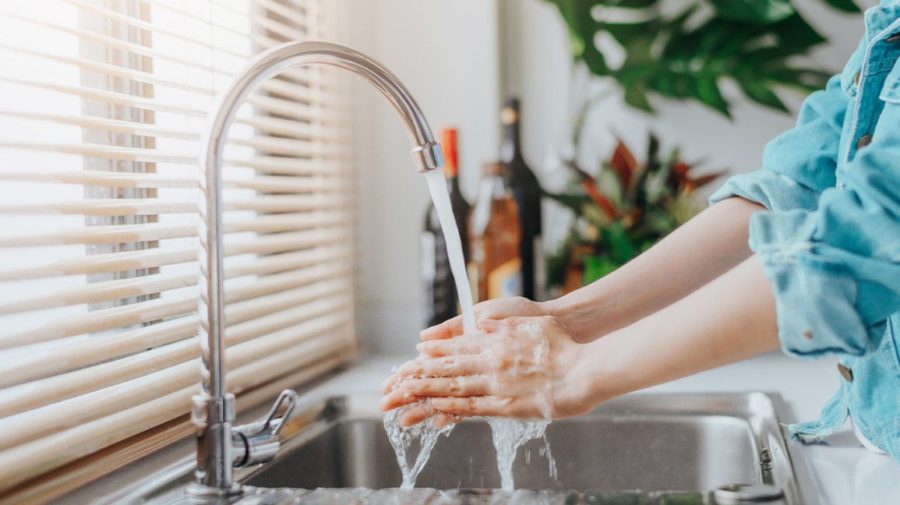
COVID-19, aka Coronavirus, is wreaking havoc on more than our physical health. People are buying N95 respirator masks, hand sanitizer, oat milk, nutrition bars, and more as coronavirus spreads.
Wash Your Hands More Often
The Center for Disease and Prevention (CDC) states that washing your hands with soap and water is superior to alcohol-based hand sanitizers.
CDC recommends washing hands with soap and water whenever possible because handwashing reduces the amounts of all types of germs and chemicals on hands. If soap and water are not available, use a hand sanitizer with at least 60% alcohol to help you avoid getting sick and spreading germs to others.
Note: The N95 mask is mainly for use if you already have the virus to keep it from spreading and many have argued that coronavirus is smaller than the 0.3 micron filter rating of the mask and thus, not that helpful, for people outside of healthcare.
Choosing the Right Disinfectant
Disinfectants, by definition, are chemicals designed to destroy vegetative forms of harmful microorganisms. With the emergence of antibiotic-resistant organisms such as Coronavirus, the utilization of appropriate disinfectant products has become exceedingly important.
Kill Time
ideal disinfectant chemistries and products will offer rapid and realistic contact times. Each product requires a specific length of time that it must remain wet on a surface to achieve complete disinfection. This is known as the “contact time” and it will be clearly listed on the label of registered disinfectant products. To ensure terminal disinfection, the contact time must be complied with.
Cleaning Ability
The cleaning efficacy – or lack thereof – of a disinfectant has the potential to affect the entire disinfection process. Environmental infection control best practices clearly recommend that cleaning should precede the disinfection of a surface or item. Dust, dirt and organic soil can create protective reservoirs for pathogens if not effectively removed.
Spectrum of Microbicidal Efficacy
Ideal disinfectants will demonstrate a broad antimicrobial effectiveness, ultimately preventing the environmental transmission of a wide variety of microorganisms including potentially resistant strains.
Personnel Health and Safety
Preferably, disinfectant chemistries should be volatile organic compound (VOC)-free, meaning no noxious fumes are emitted, non-toxic, non-irritating to skin, eyes and respiratory and non-sensitizing. Unfortunately, most disinfectant chemistries are required to compromise their overall efficacy as a germicide in order to comply with enhanced safety needs or vice-versa, compromise their safety profile to achieve broad-spectrum germicidal efficacy. An ideal disinfectant will strike a balance between safety and efficacy without compromise.
Environmental Profile
Newer technologies have determined ways to effectively eliminate pathogenic microbes by means that are more environmentally preferable. Just like microbicidal claims are validated by third-party analysis, claims of environmental preference should also be scrutinized. While the Environmental Protection Agency (EPA) does not currently allow “green” claims on registered disinfectants, there is a shift occurring within the agency to possibly change this policy.
Material Compatibility
No disinfectant chemistry is 100 percent compatible with all surfaces. In our own homes, we never use a bathroom cleaner to clean our windows, wooden table and leather furniture. So why is it that we expect to use a single disinfectant product on all surfaces within an institutional setting?
An ideal disinfectant should excel in all of the major decision-making criteria. The disinfectant should effectively clean, thereby removing dirt and soil from the surface. It should be effective against a broad spectrum of microorganisms (bacteria, viruses, etc.) in a rapid and ultimately, realistic contact time and the product’s chemistry profile should be sustainable. Finally, it should be safe for the users and the occupants of the environment as well as the environment itself post-use.